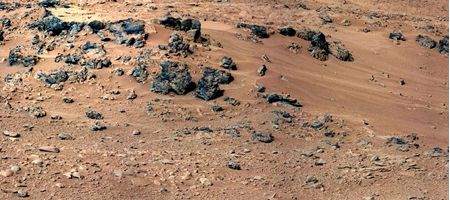Data from NASA’s Curiosity rover is helping to explain how Mars may have lost much of its original atmosphere, leaving it with 100 times less than Earth.

Mars’ environment may have been quite different in the distant past, with persistent water and a thicker atmosphere.
The rover has inhaled and analyzed atmospheric samples collected near the Rocknest site in Gale Crater. Its Sample Analysis at Mars (SAM) instruments suggest that Mars has lost a fraction of its atmosphere, through a physical process that favored the retention of heavier isotopes of certain elements.
Initial SAM results show the heavier isotopes of carbon in atmospheric carbon dioxide have increased by five percent since Mars formed. This implies that the top of the atmosphere may have been lost to interplanetary space, depleting lighter isotopes.
Isotopes of argon also show enrichment of the heavy isotope, matching previous estimates of atmosphere composition derived from studies of Martian meteorites on Earth.
NASA’s Mars Atmosphere and Volatile Evolution, or MAVEN, mission will investigate possible losses from the upper atmosphere when it arrives at Mars in 2014.
SAM has also made the most sensitive measurements ever to search for methane gas on Mars – although preliminary results reveal there’s little or none. Methane is of interest as a simple precursor chemical for life and, on Earth, can be produced by both biological and non-biological processes.
SAM’s Tunable Laser Spectrometer (TLS) gives an upper limit of just a few parts methane per billion parts of Martian atmosphere – with enough uncertainty that the amount could be zero.
“Methane is clearly not an abundant gas at the Gale Crater site, if it is there at all. At this point in the mission we’re just excited to be searching for it,” says SAM TLS lead Chris Webster of NASA’s Jet Propulsion Laboratory.
“While we determine upper limits on low values, atmospheric variability in the Martian atmosphere could yet hold surprises for us.”
SAM is set to analyze its first solid sample in the coming weeks, beginning the search for organic compounds in the rocks and soils of Gale Crater.
Analyzing water-bearing minerals and searching for and analyzing carbonates are high priorities for analysis, as they could help answer the question of whether Mars was ever suitable for life.






